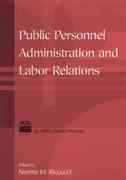Question
Young Andy possesses a super-fast car which is worth $50,000. Assume he will have a heavy (but non-fatal) car accident with the probability of 30%
Young Andy possesses a super-fast car which is worth $50,000.
Assume he will have a heavy (but non-fatal) car accident with the probability of 30% or he will have no accident at all. In the further case, his car would be worth nothing any more. He gets two insurance offers: Insurance 1: He has to pay $15,000 and in case of an accident he will get payed back the full value of his car (no co-payment required). Insurance 2: If he pays $5,000, he will get $20,000 in case of an accident without any co-payment. His utility function is given by U(X) = 2X.
a. What is a fair insurance? Are the two offers fair insurances?
b. How would Andy rank the three options 1, 2 and no insurance at all?
c. How would you characterize his risk preferences?
d. What other types of risk preferences do you know? How could they change the results if they were true for Andy? You could use some (numeric) examples to support your argumentation.
Step by Step Solution
There are 3 Steps involved in it
Step: 1

Get Instant Access to Expert-Tailored Solutions
See step-by-step solutions with expert insights and AI powered tools for academic success
Step: 2

Step: 3

Ace Your Homework with AI
Get the answers you need in no time with our AI-driven, step-by-step assistance
Get Started


